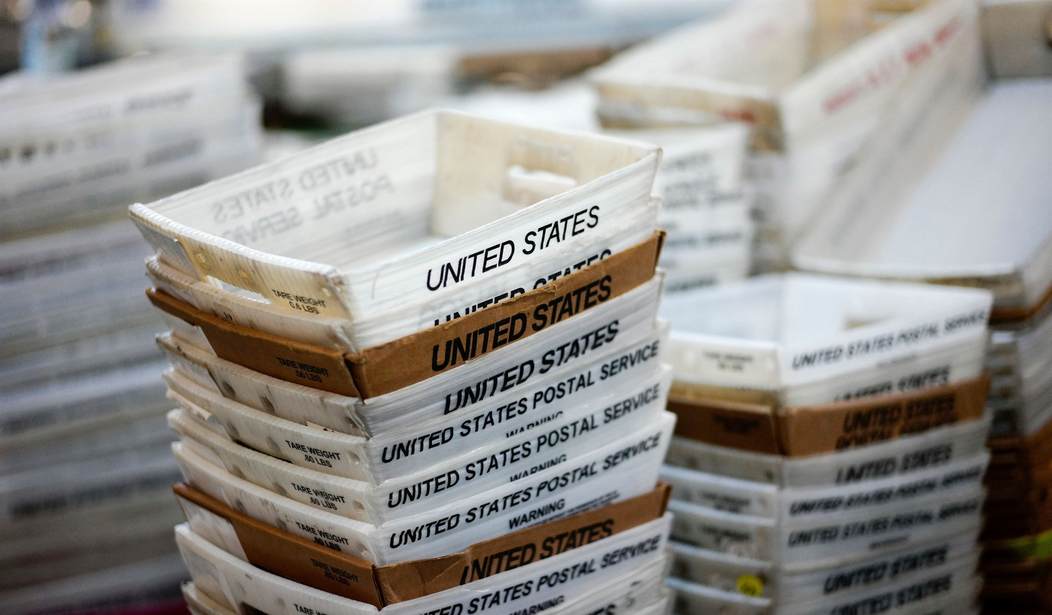The U.S. Postal Service (USPS) is bleeding red ink, having accrued more than $160 billion in unfunded liabilities. America’s mail carrier has been financially driven into the ground by a failed business model caused by failed leadership more committed to making excuses rather than reform. Fortunately, a new Postmaster General (PMG) offers an opportunity for the agency to ditch its old and failed ways and embrace new pricing and operational policies. Hopefully, incoming PMG Louis DeJoy (who started on June 15) will hit the ground running and save taxpayers and consumers from footing the bill for the agency’s decades-old problems.
Every year, the beleaguered agency loses an increasing amount of money, adding to a debt load that it cannot realistically pay absent significant reforms. This is pushing the USPS closer to the brink of a taxpayer bailout. Former PMG Megan Brennan pushed hard for a taxpayer bailout in recent months, arguing that absent a $89 billion bailout – or about $700 for each U.S. household – the USPS could soon go bankrupt. This fear-mongering has little grounding in reality. The House Oversight Committee notes that, “According to recent numbers from USPS, the agency’s revenues were higher during the first three months of the coronavirus crisis and were even higher than their revenues from the same period last year. This conflicts starkly with the picture the agency painted at the beginning of the U.S. outbreak, which it has used to justify its requests for a multibillion-dollar taxpayer bailout.”
In fact, the USPS projects in its financial documents that it has enough liquidity to last until May 2021. The agency saw an 8 percent decline in first-class mail (i.e. ordinary letters) in April, but a 38 percent surge in package revenue during that first full month of the pandemic. This holiday-like skyrocketing in parcel deliveries has given the USPS a temporary reprieve from financial Armageddon, and there’s certainly enough breathing room to take a bailout off the table.
But absent significant financial and operational changes by new leadership, taxpayers and consumers will eventually have to pay for USPS’ gross negligence. Thanks to a track record of secrecy on par with the Central Intelligence Agency, there’s no real way for independent analysts to assess how exactly the USPS prices its products. By all indications, something is seriously out of whack and resulting in the significant, systemic underpricing of packages. In its fiscal year (FY) 2019 Annual Compliance Report, the USPS estimates that the “Competitive Products Property and Equipment Assets” (i.e. for package deliveries) cost less than $5 million (see CP03). Taking this strangely low figure at face value, package-related costs comprise just 0.03% of total net equipment and property assets (which are reported in the agency’s FY 2019 10-K report).
Recommended
This figure is out of lockstep with reality given the array of package-centric investments made by the agency in recent years. But, the $5 million total is also contradicted by the agency itself elsewhere, which claims in other financial reporting that “net property and equipment” costs for competitive products were $2.88 billion in FY 2019 (see CP04). This amounts to about 20 percent of total net equipment and property assets, a figure that also seems wildly out of lockstep with reality given that packages comprise roughly half of USPS weight hauled. Something is way off with Postal parcel pricing, and the underlying Postal Regulatory Commission (PRC) standards specifying the “appropriate share” of revenue necessary to cover operational costs.
Fortunately, the D.C. District Court of Appeals found in April that these regulatory standards fail “to articulate a comprehensible standard” and should be reconsidered. It’ll take bold new Postal leadership to work with PRC officials and the courts to determine acceptable pricing policies that don’t break the bank.
By all indications, Postmaster General DeJoy is up to the challenge. DeJoy’s decades of experience in private-sector logistics and longstanding relationship with the USPS give him ample insight into the problems facing America’s mail carrier. For taxpayers and consumers’ sake, DeJoy can and must deliver much-needed reforms to the U.S. Postal Service.
Ross Marchand is the Vice President of Policy for the Taxpayers Protection Alliance.























Join the conversation as a VIP Member